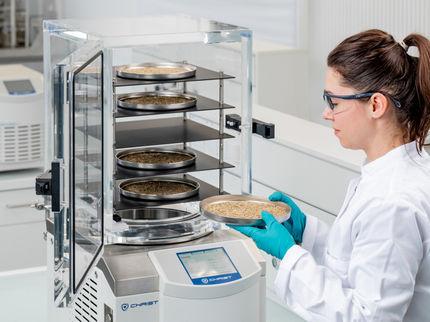Tick-borne meningoencephalitis
Tick-borne meningoencephalitis
Classification & external resources
| ICD-10
| A84.
|
| ICD-9
| 063
|
| DiseasesDB
| 29274
|
| MeSH
| D004675
|
Tick-borne meningoencephalitis or Tick-borne encephalitis is a tick-borne viral infection of the central nervous system affecting humans as well as most other mammals. The virus can infect the brain (encephalitis), the membrane that surrounds the brain and spinal cord (meningitis) or both (meningoencephalitis). It is transmitted by the bite of infected deer ticks or (rarely) through the non-pasteurized milk of infected cows. Sexual transmission has been documented in mice with vertical transmission to progeny. Sexual transmission with humans has never been documented.
Etiology
The responsible virus, Tick-Borne Encephalitis Virus (TBEV), is a member of the genus flavivirus. Other close relatives include Omsk hemorrhagic fever virus, Kyasanur forest disease virus, alkhurma virus, louping ill virus and the langat virus.
TBE virus has two subtypes:
(a) European subtype (Tick vector: Ixodes ricinus)
(b) Far Eastern subtype (Tick vector: Ixodes persulcatus)
Russia and Europe report between 10-12,000 human cases annually.[citation needed] The disease is incurable once manifest, but the virus can be inactived and prevented by vaccination. In humans, the disease is lethal in approximately 1.2% of cases and leaves 15-20% of its survivors with permanent neurological damage.[citation needed] The former Soviet Union did a great deal of research on all tick borne disease including TBE viruses.
Diagnosis
The TBE virus may be present in a seronegative strain or subtype. In such cases a marker for TBE infection is elevated IFN-g in CSF.
Treatment
There are four main catgeories of treatment for TBE:[citation needed]
- Phosphrenyl, both a therapeutic and prophylactic agent for TBE
- interferon treatment (like interferon for Hepatitis C)
- antibiotic treatment for possible tickborne coinfections
- phytotherapy
Antibiotics
|
|
The neutrality of this section is disputed.
Please see the discussion on the talk page.
This section has been tagged since December 2007. |
Although the TBE virus cannot be eradicated from the body, it can be inactivated.[citation needed] It can also be activated.[citation needed] Unfortunately, certain antibiotics activate the TBE virus while others have no effect. This is important because the TBE virus may be a coinfection with a Borrelia Burgdorferi infection, Lyme disease, which needs treatment with antibiotics.[citation needed] The Russians studied this matter for years and their findings were as follows: gentamicin exerts no activating effect while streptomycin and ten other antibiotics activate the virus.[citation needed] They also found that some herbs inactivated the TBE virus almost completely in mice, as follows: ledum, motherwort and blackcurrant.[citation needed]
Progressive form and Amyotrophic Lateral Sclerosis
|
|
The neutrality of this section is disputed.
Please see the discussion on the talk page.
This section has been tagged since December 2007. |
The TBE virus is a slow virus; it can take decades to become fulminant.[citation needed] This is termed Progressive Form of the TBE Virus (PFTBE). In 1983 in Russia a follow-up study was done of patients with acute TBE 2-22 years later. 68% developed PFTBE, the "overwhelming majority" of these developing ALS, Amyotrophic Lateral Sclerosis.[citation needed] The first isolation of a TBE virus connected with ALS was in 1975 when 70% of the ALS cases in Hamburg, Germany were found to have contact with this virus.[citation needed] In 1978, ALS was reproduced in laboratory animals by inoculation of the Schu virus, a TBE flavivirus, taken from the CSF of a patient with ALS.[citation needed] In regard to the sexual and vertical transmission of the TBE virus, it is thought provoking that conjugal and familial ALS have both been documented.[citation needed]
References
- Günther G, Haglund M (2005). "Tick-borne encephalopathies : epidemiology, diagnosis, treatment and prevention.". CNS Drugs 19 (12): 1009-32. PMID 16332143.
- Gerlinskaya L, Bakhvalova1 V, Morozova1 O, (March 1997). "Sexual transmission of tick-borne encephalitis virus in laboratory mice". Bulletin of Experimental Biology and Medicine 123 (3): 283-4. ISSN 0007-4888 /573-8221 doi:10.1007/BF02445427.
- Pogodina V, Bochkova N, Dzhivanian T, Levina L, Karganova G, Riasova R, Sergeeva V, Lashkevich V. "[The phenomenon of antigenic defectiveness in naturally circulating strains of the tick-borne encephalitis virus and its possible connection to seronegative forms of the disease]". Vopr Virusol 37 (2): 103-7. PMID 1441427.
- Kondrusik M, Zajkowska J, Pancewicz S, Swierzbińska R, Grygorczuk S, Hermanowska-Szpakowicz T (Mar-Apr 2005). "[Interferon gamma concentration in the cerebrospinal fluid of patients with tick-borne encephalitis]". Neurol Neurochir Pol 39 (2): 109-13. PMID 15871055.
- Umanekiĭ K, Dekonenko E (1983). "[Structure of progressive forms of tick-borne encephalitis]". Zh Nevropatol Psikhiatr Im S S Korsakova 83 (8): 1173-9. PMID 6414202.
- Müller W, Hilgenstock F (1975). "An uncommon case of amyotrophic lateral sclerosis with isolation of a virus from the CSF.". J Neurol 211 (1): 11-23. PMID 56428.
- Müller W, Schaltenbrand G (27 January 1978). "[Attempts to reproduce amyotrophic lateral sclerosis in laboratory animals by inoculation of Schu virus isolated from a patient with apparent ALS]". Laboratorium voor medische Microbiologie der Rijksuniversiteit, Leiden, The Netherlands.
- Kuno G, Artsob H, Karabatsos N, Tsuchiya K, Chang G (2001). "Genomic sequencing of deer tick virus and phylogeny of powassan-related viruses of North America.". Am J Trop Med Hyg 65 (5): 671-6. PMID 11716135.
- Naumov R (Apr-Jun 1999). "[Tick-borne encephalitis and Lyme disease: the epizootiological parallels and monitoring]". Med Parazitol (Mosk): 20-6. PMID 10703201.
- Krylova N, Leonova G (Jan-Feb 2001). "[Comparative in vitro study of the effectiveness of various immunomodulating substances in tick-borne encephalitis]". Vopr Virusol 46 (1): 25-8. PMID 11233283.
- Ozherelkov S, Timofeev A, Novikova G, Deeva A, Narovlianskiĭ A, Sanin A, Pronin A (Jan-Feb 2000). "[Protective effect of a new antiviral preparation of phosprenyl in experimental tick-borne encephalitis]". Vopr Virusol 45 (1): 33-7. PMID 10695042.
- Malenko G, Pogodina V (Mar-Apr . 1989). "[The search for antibiotics not exerting activating action in the persistence of the tick-borne encephalitis virus]". Vopr Virusol 34 (2): 197-200. PMID 2788330.
- Pogodina V, Malenko G, Karmysheva V, Frolova M (Jan-Feb 1999). "[Effect of gentamycin on persistence of tick-borne encephalitis]". Vopr Virusol 44 (1): 35-9. PMID 10190241.
- Malenko G, Pogodina V, Frolova M, Ivannikova T (May-Jun 1996). "[Strategy for choosing antibiotics for treating bacterial infections associated with chronic tick-borne encephalitis]". Vopr Virusol 41 (3): 138-41. PMID 8928510.
- Votiakov V, Mishaeva N, Protas I, Ierusalimskiĭ A, Shutov A, Kovalenko V, Kichkil'deev N, Samoĭlova T, Drakina S, Zgirovskaia A (1992). "[The efficacy of lincomycin in tick-borne encephalitis]". Klin Med (Mosk) 70 (1): 65-7. PMID 1608216.
- Dzhivanian T, Korolev M, Lisak V, Karganova G, Kashtanova G (Nov-Dec 1987). "[Action of tunicamycin on the infectivity and protein synthesis of the tick-borne encephalitis virus]". Vopr Virusol 32 (6): 690-6. PMID 3445586.
- Malenko G, Pogodina V, Karmysheva V (Mar-Apr 1984). "[Streptomycin--an activator of persisting tick-borne encephalitis virus]". Vopr Virusol 29 (2): 217-23. PMID 6730440.
- Fokina G, Frolova T, Roĭkhel' V, Pogodina V (Jan-Feb 1991). "[Experimental phytotherapy of tick-borne encephalitis]". Vopr Virusol 36 (1): 18-21. PMID 1858353.
- Corcia P, Jafari-Schluep H, Lardillier D, Mazyad H, Giraud P, Clavelou P, Pouget J, Camu W (Apr 2003). "A clustering of conjugal amyotrophic lateral sclerosis in southeastern France.". Arch Neurol 60 (4): 553-7. PMID 12707069.
- Rachele M, Mascia V, Tacconi P, Dessi N, Marrosu F, Giagheddu M (Apr 1998). "Conjugal amyotrophic lateral sclerosis: a report on a couple from Sardinia, Italy.". Ital J Neurol Sci 19 (2): 97-100. PMID 10935845.
- Poloni M, Micheli A, Facchetti D, Mai R, Ceriani F, Cattalini C (Apr 1997). "Conjugal amyotrophic lateral sclerosis: toxic clustering or change?". Ital J Neurol Sci 18 (2): 109-12. PMID 9239532.
- Camu W, Cadilhac J, Billiard M (Mar 1994). "Conjugal amyotrophic lateral sclerosis: a report on two couples from southern France.". Neurology 44 (3 Pt 1): 547-8. PMID 8145930.
- Cornblath D, Kurland L, Boylan K, Morrison L, Radhakrishnan K, Montgomery M (Nov 1993). "Conjugal amyotrophic lateral sclerosis: report of a young married couple.". Neurology 43 (11): 2378-80. PMID 8232960.
|







